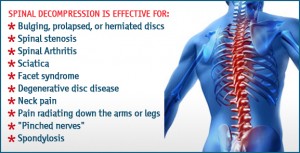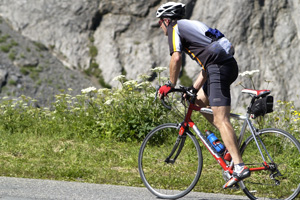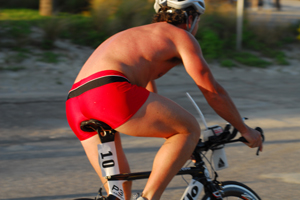








 When it comes to back pain care NYC residents should know that specialists employ a multi-pronged approach. A tailored back care program will almost always involve physical therapy. Upper East Side doctors generally prescribe physical therapy to their patients when the back pain has lasted for two to six weeks.
When it comes to back pain care NYC residents should know that specialists employ a multi-pronged approach. A tailored back care program will almost always involve physical therapy. Upper East Side doctors generally prescribe physical therapy to their patients when the back pain has lasted for two to six weeks.
For patients suffering from back pain, physical therapy allows them to achieve three goals. First, the therapist can help ease the pain. Alongside this, therapy allows a patient to regain normalcy in his daily routines. Finally, a seasoned therapist educates his patients regarding exercises and correct movements that can prevent the back pain from recurring.
Treatment begins with a consultation wherein the therapist assesses the patient’s conditions. From there, he will tailor a specialized treatment plan. Typically, a treatment plan is comprised of two components: passive and active physical therapy.
Passive therapy refers to modalities or procedures which are done to a patient. These may include cold laser therapy, medical massage, chiropractic, acupuncture, ultrasound, spinal decompression and flexion-distraction.
These passive modalities are supplemented by back pain exercises. One of the simplest yet most effective exercises for back pain is hamstring stretching. A therapist can also prescribe dynamic lumbar stabilization or core strengthening exercises that a patient can perform in as little as 15 to 20 minutes a day. Therapists also encourage their patients to perform low-impact aerobic exercises like walking, swimming and cycling, which aid in the reduction of pain.
If you are suffering from back pain, the best time to consult a physical therapist is at the soonest possible time. Putting off your appointment with a physical therapist when your pain has become unbearable can lead to long-term disability, permanent damage and costly remedies like surgery.
With the aid of a physical therapist, a patient can learn how to intelligently deal with his back condition. This means learning how to pace oneself when the pain is at bay and how not to be sidelined by pain when it attacks.
In seeking the help of a physical therapist, it is important to look past the quick gains that one can reap. If you have been suffering from back pain for weeks, the appeal of opting for the shorter route is understandable. However, a reputable physical therapist understands that the more important goal that a patient needs to achieve is normalcy in his daily routines. This can be attained through small, consistent gains over a period of time.
 Headaches. Back pains. Neck pains. Sports injuries. Workplace injuries. Whatever type of pain you may be feeling now and however you got it, you know that popping those over-the-counter pain pills are only going to work for so long. After a while, the effects of certain pain relievers wear off and then you’re left with yet another bout of throbbing discomfort.
Headaches. Back pains. Neck pains. Sports injuries. Workplace injuries. Whatever type of pain you may be feeling now and however you got it, you know that popping those over-the-counter pain pills are only going to work for so long. After a while, the effects of certain pain relievers wear off and then you’re left with yet another bout of throbbing discomfort.
When you can no longer keep relying on over-the-counter pain relievers and when the pains have started to get progressively bad, you will want a better remedy. You will want the expertise and knowledge of a specialist like a midtown chiropractor NYC has licensed. Here’s how to find the best specialist for your condition.
Consider your preferences.
You’ll want to narrow down your list of chiropractors by figuring out which doctor you’re comfortable with: male or female. It may seem like a minor issue but you would naturally want to be relaxed around your chiropractor, especially during adjustments and other forms of manual therapy. Once you’ve determined you’re, for example, more agreeable to a male chiropractor, you can create a shortlist.
Look for specialties.
Some chiropractors in NYC will specialize in particular types of injuries. If you happen to be a fairly active person and play recreational sports, you might consider looking for a midtown chiropractor that focuses on sports injuries. An alternative would be to look into a chiropractic clinic, which should have several chiropractors who deal with any number of spinal-related injuries and/or conditions.
Know about the therapies being offered.
Innovation is key. You’ll want to see a list of modern treatments for different back, neck, shoulder, hip, and leg conditions. Wide-ranging treatments that reflect advancements in chiropractic care will indicate the clinic’s sophisticated treatment methods and its knowledge in dealing with your specific pain.
There are multiple options for getting non-invasive treatments today. So you might want to see those non-invasive treatments from your chiropractic clinic.
Ask around.
Finally, it never hurts to ask trusted friends and family about their chiropractor. Getting favorable assessments of certain chiropractors would give you an idea of the doctor’s capabilities, his personality, and his experience.
Is the chiropractor a good listener? Does he push for more progressive treatment plans or does he offer more conservative care, keeping the patient’s level of comfort in mind? Is the chiropractor on time for appointments? By getting an account of other patients’ experiences, you’ll be able to make an informed decision in choosing your chiropractor.
Lumbar spine surgery. Spinal fusion. Disc replacement. Laminectomy. Back surgery is rarely an easy decision. Unless your condition dictates no other option, you’re likely to look for other ways to resolve your back pain and/or recover from an injury.
 And why not? If you don’t have to undergo an invasive procedure, you won’t have to worry about the potential risks: bleeding, infection, adverse reaction to anesthesia, and others. Plus, a nonsurgical option would certainly be a lot less expensive in comparison to a surgical procedure. One possible back pain solution is the spinal decompression therapy.
And why not? If you don’t have to undergo an invasive procedure, you won’t have to worry about the potential risks: bleeding, infection, adverse reaction to anesthesia, and others. Plus, a nonsurgical option would certainly be a lot less expensive in comparison to a surgical procedure. One possible back pain solution is the spinal decompression therapy.
Spinal decompression therapy, NYC residents might want to know, relieves back pain by gently stretching the spine on a traction table or any motorized device. Stretching the spine allows for change in its position and its force that leads to alleviating the pressure off the spinal discs.
The nonsurgical treatment is recommended for people who experience back pain due to disc herniation, degenerative discs, worn spinal joints (also known as posterior facet syndrome), and injured spinal nerve roots. Spinal decompression, NYC residents would want to know, is not ideal for anyone who has had unsuccessful back surgery, anyone with a spinal tumor, stenosis, or infection, anyone with advanced osteoporosis, Ankylosing spondylitis, or anyone who has already had multiple surgeries.
How does this therapy take place? First thing to note is that you will be fully clothed during the therapy. A harness will be fitted around your pelvis, plus another one around your trunk. You will then lie down — face up or face down — on a computer-controlled table. The computer will then be programmed to customize your treatment. A treatment will generally last from 30 to 45 minutes.
Typical spinal decompression therapy will comprise of 15 to 30 sessions; the number of your sessions will depend on your condition and the findings of your specialist. The costs for each session will vary.
Your specialist may also require you to do certain things before and after the sessions, like performing exercises to improve your mobility and strength and to drink a half-gallon of water daily. You’ll want to get these things in writing so that you don’t forget and you boost your chances of recovery with the nonsurgical therapy.
Back pains are not just physically agonizing, but they can also prevent you from doing what it is you love to do every day. When you’ve got an opportunity to go with a non-invasive treatment, ask your spinal specialist about spinal decompression. And you can maybe start your journey to pain-free days.
 A burning sensation in the shoulders, numbness of the arms and hands, and tightness in the neck are common sensations among both recreational and competitive cyclists. They might be easy to ignore at first, but if they come back again and again they can seriously interfere with both enjoyment and training progress. Upper and lower back problems are another common consequence of regular cycling. Can a chiropractor help with these problems?
A burning sensation in the shoulders, numbness of the arms and hands, and tightness in the neck are common sensations among both recreational and competitive cyclists. They might be easy to ignore at first, but if they come back again and again they can seriously interfere with both enjoyment and training progress. Upper and lower back problems are another common consequence of regular cycling. Can a chiropractor help with these problems?
Absolutely. In addition, chiropractors can help prevent injuries and even enhance speed, strength, and efficiency for healthy cyclists. Athletes of all kinds can find help with rehabilitation, maintenance, prevention, and treatment in the hands of a well-trained chiropractor.
Chiropractors have a unique set of skills to offer cyclists, in addition to their general musculoskeletal expertise. Both specific and general skills are critical to successful treatment of cyclists because everything in cycling is interconnected: the nerves, the muscles, and the joints. In fact, if your physician or chiropractor doesn’t address all three of these issues at once, you are likely to continue to have the symptoms, pain, or injury without relief. In particular, a chiropractor that specializes in sports medicine is will probably have the most to offer you as a cyclist. They will also work with adjunct professionals such as sports trainers or physical therapists as needed to address your particular needs.
Solutions to problems cyclists experience will likely be multi-dimensional. That is, a combination of adjustments, deep tissue massage, exercises, and stretches will likely be required. For example, if a cyclist is suffering from lower back pain, it may be due to hip rotation. An adjustment of the sacroiliac joints will be quite helpful, but appropriate stretching and strengthening exercises will also be needed to address the weakness and tightness in the muscles that affect the hip joints. Strengthening exercises will contribute stability to the joint, while stretching will help to lengthen the muscles in the region thus preventing them from contracting when stressed.
In fact, it is absolutely essential that patients do their part to contribute to their recovery from cycling injuries or pain. If you do not complete the required stretching and strengthening exercises at home, you may not see the relief you expect.
Finally, a chiropractor who specializes in sports medicine will likely be able to help you professionally fit your bicycle so that it causes the least strain on your body. Seat placement, bicycle size, handlebar height, and cycling posture all have a significant impact on both performance and stress on the body. Many chiropractors offer in-house bicycle analyses and adjustments to help you get the most out of cycling with the least stress on your joints.
 A triathlon is an athletic event incorporating back-to-back running, cycling and swimming. Triathlons exert great strain on the body, which may challenge athletes on both physical and mental levels. The extreme training a triathlete must endure can put the body under great cumulative stress, and it’s not uncommon for the athletes to suffer from a broad range of injuries and overuse stresses.
A triathlon is an athletic event incorporating back-to-back running, cycling and swimming. Triathlons exert great strain on the body, which may challenge athletes on both physical and mental levels. The extreme training a triathlete must endure can put the body under great cumulative stress, and it’s not uncommon for the athletes to suffer from a broad range of injuries and overuse stresses.
There are numerous worldwide triathlon events, such as Ironman, Half-Ironman, Olympic and Spring. The majority of these events advocate the use of chiropractic care to aid not only in treating injuries, but also to improve performance. Chiropractic care offers the possibility of enhanced finishing times and a greater likelihood of triathletes finishing events.
Chiropractic treatment is a practice that focuses on the neuromuscular skeletal system and its use optimizes biomechanics. For these reasons, chiropractic care is ideal for athletes looking to treat or prevent injuries.
One type of chiropractic treatment used by many triathletes is the “Active Release Technique,” which is a form of soft tissue treatment based on an advanced movement massage system. It is very effective in locating and treating the cause of soft tissue conditions. Active Release Techniques are used in most of the large name triathlons.
Many triathletes suffer from injuries attributed to repetitive strain and stress, since excessive training can result in muscle restrictions due to adhesion formation. Before treatment takes place, a biomechanical analysis of the athlete is conducted to determine the exact location of restrictions in the body along the kinetic chain. Active Release Techniques focus on specific tissues that have become restricted physically, and are then manipulated back into their original texture, tension and position. Once the soft tissues are repositioned, specific exercises are then carried out in order to aid the recovery of damaged tissues.
Unlike most treatments, treating the injured triathlete with chiropractic care does not require extended rest periods before improvements are seen. It is very common that injured athletes who receive the Active Release Technique show signs of improvement in just a few sessions. For those who are looking to invest only in preventive treatment, improvement in performance is also achieved in the span of a few sessions.
A possible reason that chiropractic care prior to an event can result in performance enhancement may be that spinal adjustments improve the body’s maximal oxygen consumption ability. Since prevention is easier than treatment of an injury, many professional athletes invest in preventive and performance enhancing chiropractic treatment.
 Chiropractic care is an important tool in the arsenal of any professional athlete. It has been shown to help reduce injuries, speed healing time and improve performance.
Chiropractic care is an important tool in the arsenal of any professional athlete. It has been shown to help reduce injuries, speed healing time and improve performance.
A number of professional American sports teams have a chiropractor on staff, including the NFL, NBA, MLB, PBA, Nascar and more. Professional golfers routinely use a chiropractor during tournaments, as golf can produce a great amount of stress on the vertebrae due to twisting. Well-known professional athletes such as Michael Jordan, Lance Armstrong, Tiger Woods, Joe Montana and many others have reported how they have benefited from chiropractic treatment.
A study conducted in 1991 by researchers Anthony Lauro and Brian Mouch, which was published in The Journal of Chiropractic Research and Clinical Investigation, found that athletes under chiropractic treatment were able to improve their performance an average of 10.6% over six weeks and 16.7% over a period of 12 weeks. The researchers noted that, as the study was only 12 weeks in duration, and athletic performance continued to improve during that time, it is possible that further enhancement may be possible with longer chiropractic treatment, though at what point improvement would level off is still unknown.
Another study reported in the Journal of Vertebral Subluxation Research in 1997, which evaluated the performance of baseball players, found a marked increase in athletic performance, including an increase in capillary counts, after 14 weeks in the group that was receiving upper cervical chiropractic adjustments. In regard to the effect of chiropractic care on these athletes, the researchers concluded that, “it is evident that changes were measurable in regard to physical strength, tests of athletic ability such as the long jump, and microcirculation.”
Athletes under chiropractic care have faster reaction time, better coordination and achieve more accurate and precise fine movements, all of which contribute to better performance.
There are a large number of high-impact sports that exert a lot of stress on the spine. It is quite easy for the vertebrae to become misaligned during a football tackle, during competitive wrestling or in a Nascar race that involves excessive g-force. When this happens, it can disrupt nerve transmissions from the nerves in the spinal cord, resulting in limited range of motion, slower reaction time, headaches, inflammation and slower recovery from injuries.
Chiropractic adjustments reduce irritation to the roots of the nerve in the spinal column, which allows for greater range of motion and joint flexibility. In addition, joint pain is alleviated and blood circulation is increased, which supplies the body’s muscles and organs with oxygen.
 PGA golfers Tiger Woods and Padraig Harrington have used chiropractic services for years in order to improve and maintain their golfing performance. Their successes suggest a benefit of chiropractic care, but it’s hard to know if it’s because of the care or because they are world-class athletes. Can chiropractic care help the average golfer improve their performance as well?
PGA golfers Tiger Woods and Padraig Harrington have used chiropractic services for years in order to improve and maintain their golfing performance. Their successes suggest a benefit of chiropractic care, but it’s hard to know if it’s because of the care or because they are world-class athletes. Can chiropractic care help the average golfer improve their performance as well?
The very nature of the game of golf suggests a good match for players with chiropractic care. Golfing can involve considerable strain on the spine. Golfers need to move from a standing position quickly to club head speeds, requiring good posture, balance, and the ability to rotate the spine properly. Poor posture can create exaggerated or flattened spinal curves that can seriously affect swing performance. In fact, Tom Ward, PGA Golf Instructor, says, “Over 50% of all golfers will experience some sort of pain due to poor posture and the problems that arise from loss of proper curves in the spine.”
By working with your spinal range of motion, chiropractic care can help correct golf injuries, maintain performance, and improve the posture needed to perform a good golf swing. When the chiropractor aligns all the vertebrae, the spine can move better. An individualized treatment plan including chiropractic adjustments, specific rehabilitation exercises and muscle techniques may make a significant difference in your overall performance and enjoyment of the sport.
Recent research confirms that chiropractic care can indeed lead to improved golf performance. A recent study published in the Journal of Chiropractic Medicine demonstrated that the combination of chiropractic care and stretching are associated with greater improvements in golfers’ swings when compared to stretching alone.
Two groups of golfers participated in the study. One group received a program of stretching only, and the second received both stretching and spinal manipulation. The stretching program was the same for both groups, and both groups had similar average ages, handicaps, and initial swings. All 43 participants initially performed three full swing maneuvers, and the average distances were recorded. Over a 4-week period, all participants hit 3 balls before and after treatment.
After 4 weeks, the stretching only group showed no improvement in swing performance. However the stretching and manipulation group did improve their swing performance and there was greater driving distance right after treatment each week. So it appears that yes, chiropractic care can help not only top golfers such as Woods and Harrington, but it can help you improve your golf game too.